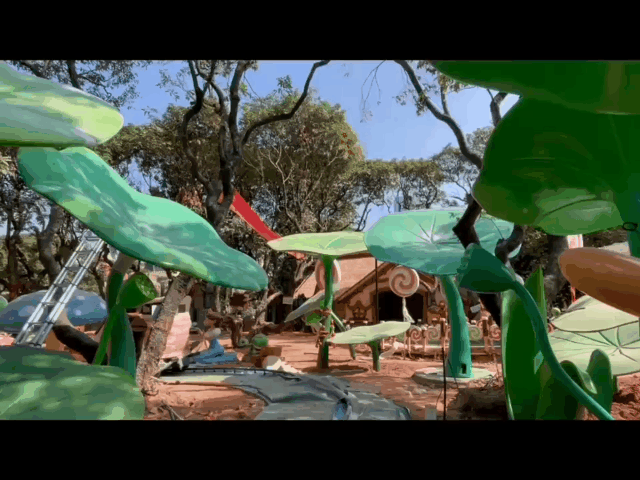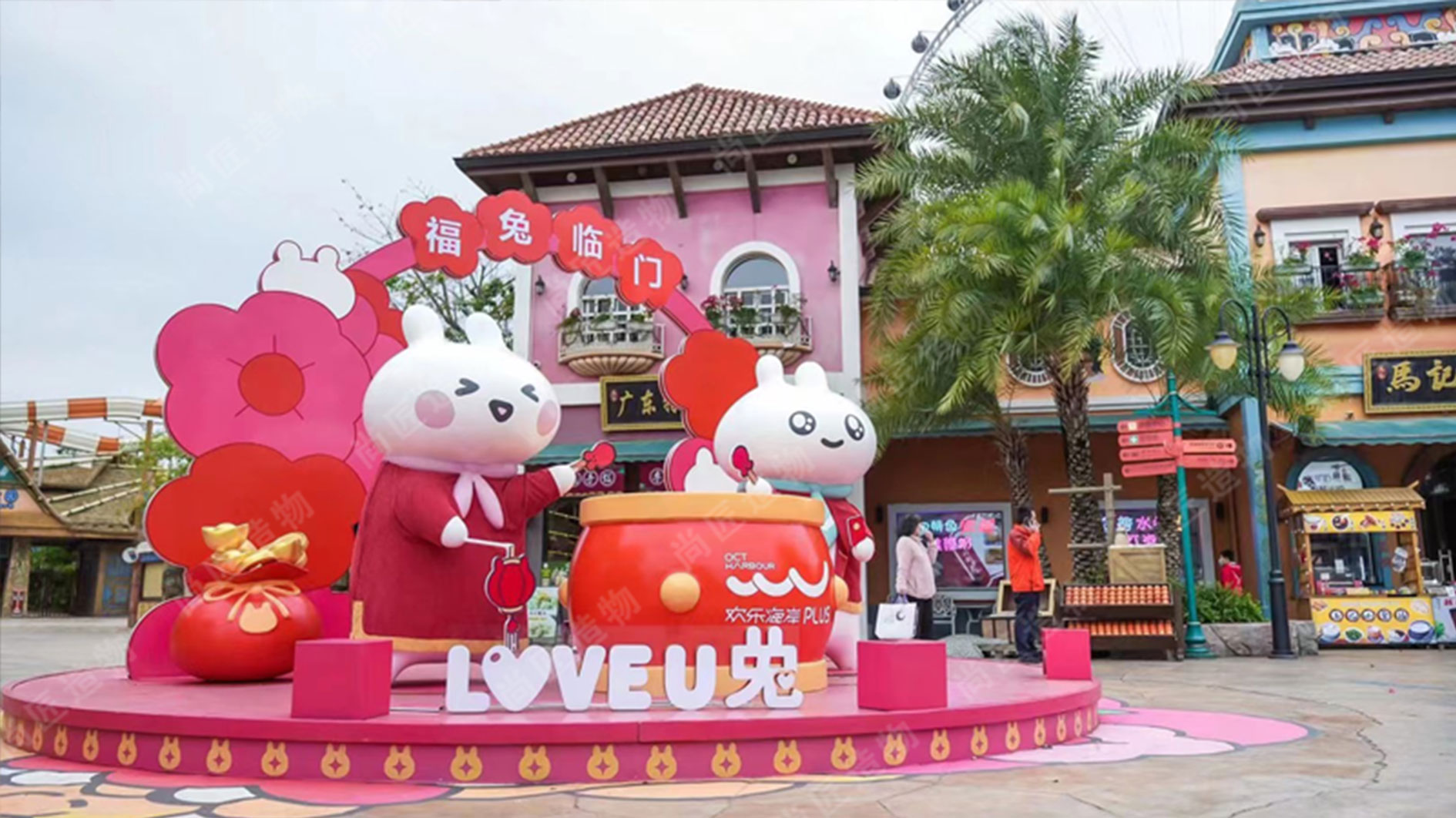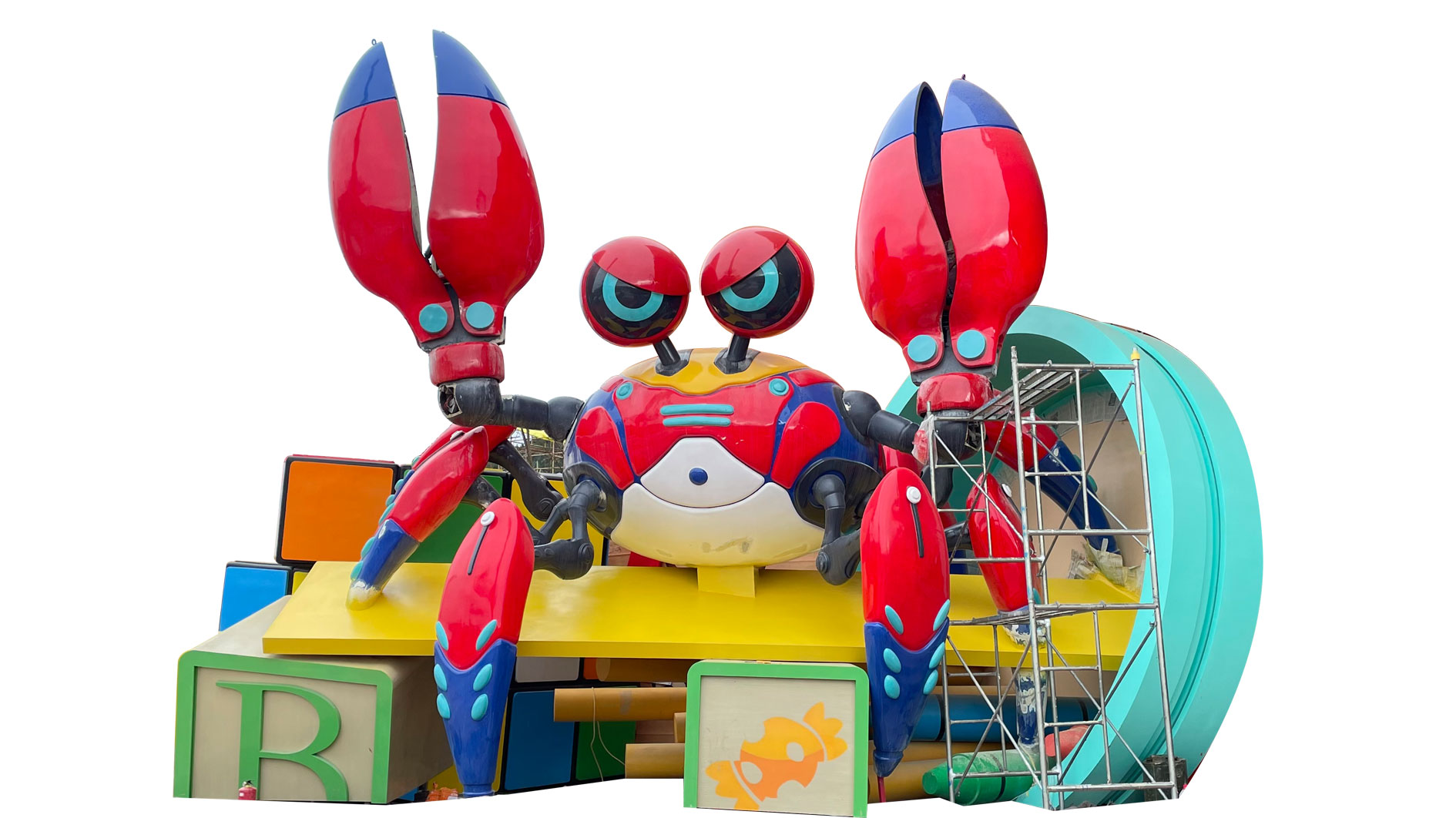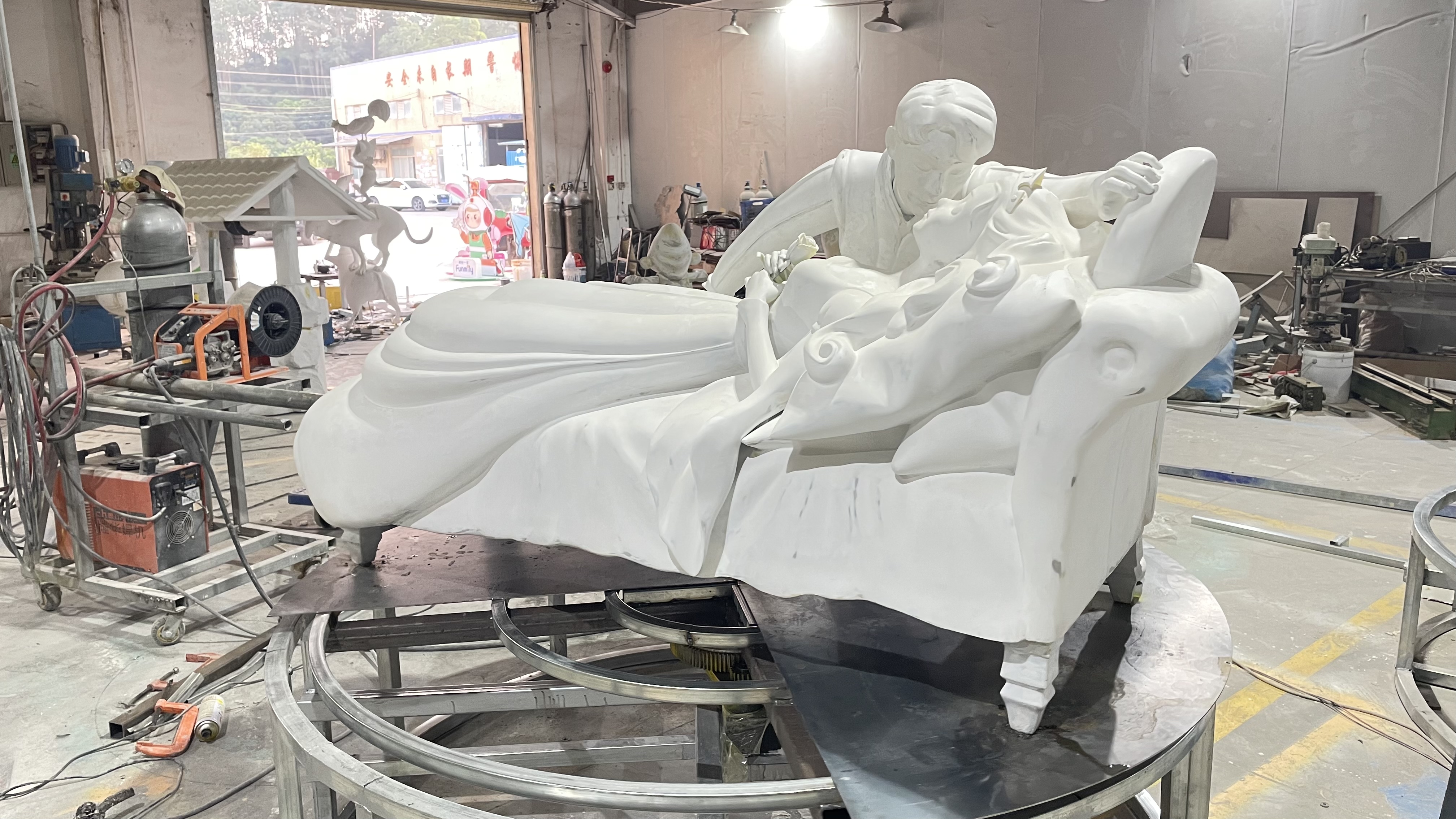Key Takeaways
Effective IP character sculptures require strategic alignment between artistic expression and brand identity. Three core elements define success: design precision, material selection, and narrative integration. Design must balance originality with brand recognition—exaggerated features or symbolic details often enhance memorability. For example, rounded shapes may convey approachability, while angular forms suggest innovation.
Material choice directly impacts durability and emotional resonance. Modern advancements, such as stainless steel sculpture techniques, enable weather-resistant installations for outdoor branding, while biodegradable polymers cater to eco-conscious audiences. Below is a comparison of common materials:
| Material | Key Benefits | Ideal Use Cases |
|---|---|---|
| Stainless Steel | Durability, modern aesthetic | Public installations |
| Resin | Detail precision, versatility | Indoor displays |
| Recycled Plastics | Sustainability, lightweight | Event-based promotions |
Storytelling transforms sculptures into interactive touchpoints. Embedding narrative cues—like hidden symbols or motion-based interactions—deepens audience engagement. For instance, a sculpture with movable parts invites tactile exploration, reinforcing brand values like innovation or playfulness. By merging aesthetics with strategic messaging, brands can create artifacts that resonate emotionally while amplifying identity.

Sculpting Brand Identity Through IP Characters
IP character sculptures act as three-dimensional ambassadors, translating abstract brand values into physical forms audiences can see and touch. Unlike logos or slogans, these sculptures create multisensory experiences by combining visual appeal with tactile interaction. For example, a tech company might design a futuristic robot sculpture to embody innovation, while a children’s brand could use soft, rounded shapes to communicate playfulness.
“A well-crafted IP sculpture isn’t just art—it’s a silent storyteller that bridges the gap between brand philosophy and public perception.” — Industrial Design Quarterly
Successful designs balance symbolic meaning with functional aesthetics. Proportion, texture, and color psychology play critical roles: angular lines may convey strength, while organic curves suggest approachability. Brands like IP character sculpture pioneers often collaborate with sculptors and cultural experts to ensure alignment with regional sensibilities or heritage motifs.
Tip: When conceptualizing an IP sculpture, map its design elements to your brand’s core narrative—every detail should reinforce the message, from material choices (e.g., recycled metals for sustainability-focused brands) to pose dynamics (open gestures for inclusivity).
This tactile approach to branding not only enhances memorability but also fosters emotional connections, setting the stage for deeper audience engagement—a theme explored further in strategies for material innovation and storytelling.
Design Strategies for Memorable IP Sculptures
Effective IP character sculpture design begins with a deep understanding of brand DNA. Designers must translate abstract brand values—such as innovation, trust, or playfulness—into physical forms through deliberate shape language and proportional choices. For instance, rounded silhouettes often convey approachability, while angular features might emphasize strength or precision. A 2023 study by the Global Branding Institute found that sculptures aligning color schemes with a company’s visual identity boost brand recognition by up to 40%.
Equally important is balancing artistic expression with functional considerations. Public installations, for example, require durable materials like fiberglass sculpture to withstand environmental factors while maintaining intricate details. Scale also plays a critical role: oversized sculptures create Instagram-worthy landmarks, while smaller desk versions foster personal connections. Design teams increasingly use 3D modeling to test how lighting and viewing angles affect emotional impact—a practice that bridges technical precision with storytelling needs. By integrating these strategies, brands create sculptures that serve as both artistic statements and strategic touchpoints in their identity ecosystems.

Material Innovations in Character Sculpture Art
While design establishes a character’s visual identity, material selection determines its tactile and emotional impact. Modern sculptors now blend traditional mediums like bronze and resin with advanced composites, such as lightweight carbon fiber-reinforced polymers, to achieve intricate details while ensuring durability. For brands prioritizing sustainability, biodegradable PLA plastics and recycled aluminum alloys offer eco-conscious alternatives without compromising aesthetic precision. Innovations like translucent photopolymers enable dynamic light interactions, adding depth to Realistic sculpture features that mirror brand values.
The rise of 3D-printed graphene-infused ceramics has further expanded possibilities, allowing for ultra-fine textures that enhance a character’s expressiveness. These materials not only withstand environmental stressors but also create multisensory experiences—think temperature-responsive surfaces or textured finishes that invite touch. By aligning material properties with brand narratives—such as using rugged, weathered metals for adventure-themed IPs—companies can transform static sculptures into storytelling devices. This fusion of science and art ensures that each piece becomes a lasting physical embodiment of a brand’s essence, bridging the gap between abstract identity and tangible interaction.

Storytelling Techniques for Emotional Brand Connections
Effective IP character sculptures transcend visual appeal by embedding narrative depth into their design. A sculpture’s ability to evoke emotion hinges on how well it translates a brand’s story into physical form. For instance, incorporating symbolic gestures—like a Cartoon sculpture holding an object tied to a brand’s origin—can subtly communicate heritage or values. Layered storytelling techniques, such as integrating interactive elements (e.g., QR codes linking to behind-the-scenes content) or using materials that reflect a brand’s sustainability mission, deepen audience engagement.
To build emotional resonance, designers often align a character’s posture, expression, and accessories with the brand’s core message. A playful stance might reflect innovation, while weathered textures could symbolize resilience. Case studies show that sculptures featuring recurring motifs from a brand’s advertising campaigns create familiarity, bridging the gap between digital and physical experiences. By balancing subtlety and clarity, these techniques transform static art into dynamic storytellers, fostering lasting connections that align with broader strategies discussed in sections like Crafting Tangible Brand Essence via 3D Sculptures.

Crafting Tangible Brand Essence via 3D Sculptures
Three-dimensional sculptures offer brands a unique medium to materialize their identity, transforming abstract values into tactile forms audiences can see, touch, and remember. Unlike traditional branding methods, 3D sculptures leverage spatial design to emphasize proportions, textures, and interactive elements—features that amplify emotional resonance. For instance, integrating kinetic sculpture mechanisms can add motion to static figures, symbolizing a brand’s dynamism or adaptability. Advanced materials like lightweight composites or eco-friendly resins further enhance durability while aligning with sustainability narratives.
This process begins with translating brand attributes—such as trust, innovation, or playfulness—into visual motifs. A tech company might use angular geometries to convey precision, while a children’s brand could opt for rounded, vibrant forms. Crucially, 3D sculpting software enables precise adjustments to ensure the final piece reflects both artistic vision and brand guidelines. By grounding intangible qualities in physical artistry, businesses create lasting touchpoints that bridge the gap between corporate messaging and human connection.
Case Studies: IP Sculptures Driving Audience Engagement
Real-world examples demonstrate how IP character sculptures bridge brand messaging and audience interaction. A global tech company, for instance, introduced a 12-foot robot sculpture inspired by its mascot at flagship stores. Augmented reality features allowed visitors to scan the sculpture, unlocking interactive stories about the brand’s innovation journey. This hybrid physical-digital approach increased foot traffic by 34% and social media mentions by 52% within three months.
Another case involves a children’s entertainment brand that installed modular sculptures in urban parks. Each piece could be rearranged by visitors, encouraging collaborative play while subtly reinforcing the brand’s “creativity through connection” ethos. Post-campaign surveys revealed 68% of parents associated the tactile experience with the brand’s core values.
Transitioning to retail, a luxury fashion label embedded miniature character sculptures into product packaging. Customers began sharing unboxing videos featuring these collectibles, organically amplifying the brand’s narrative of craftsmanship. Such strategies highlight how three-dimensional IP art transcends passive viewing, fostering participatory engagement that aligns with broader design and storytelling principles discussed earlier.
Balancing Aesthetics and Brand Messaging in Sculptures
Creating IP character sculptures that resonate with audiences requires a careful equilibrium between visual appeal and brand communication. While striking designs capture attention, the sculpture’s form, color palette, and material choices must align with the brand’s core values and messaging. For example, a playful, cartoonish figure might suit a children’s entertainment brand, whereas sleek, minimalist shapes could better reflect a tech company’s innovative ethos. Designers often use symbolic elements—such as geometric patterns or culturally significant motifs—to subtly reinforce brand narratives without overwhelming the viewer.
However, prioritizing aesthetics alone risks diluting the brand’s identity. Conversely, overly literal interpretations of brand messaging can result in rigid, uninspiring designs. Successful sculptures strike a balance by integrating storytelling cues into their physical structure. A food brand’s mascot, for instance, might incorporate textures resembling ingredients to evoke sensory memories. This duality ensures the sculpture functions as both an artistic statement and a strategic brand asset, fostering recognition while inviting emotional engagement. By maintaining this harmony, businesses can transform IP characters into enduring symbols that bridge creativity and commercial intent.
Future Trends in Custom IP Character Design
As brands seek deeper audience engagement, custom IP character design is evolving through emerging technologies and shifting cultural expectations. One key trend is the integration of augmented reality (AR) and mixed reality (MR), enabling sculptures to interact dynamically with viewers via smartphones or wearable devices. For instance, a static sculpture might "come alive" to share brand stories or respond to user gestures. Another development is the use of biodegradable and smart materials, such as self-healing polymers or color-shifting resins, which align with sustainability goals while adding functional novelty. Advances in 3D-printing precision now allow hyper-detailed textures, from lifelike fur to translucent effects, expanding creative possibilities without compromising durability.
Data-driven personalization is also gaining traction, with AI algorithms analyzing consumer preferences to generate modular designs—think interchangeable accessories or poseable limbs tailored to regional markets. Meanwhile, the rise of decentralized platforms like Web3 is fostering collaborative creation, where communities co-design characters through blockchain-based voting systems. These innovations not only enhance visual appeal but also deepen emotional resonance by making audiences active participants in a brand’s narrative evolution. As these trends converge, they redefine how physical sculptures serve as bridges between digital brand identities and real-world experiences.
Conclusion
The creation of IP character sculptures represents a powerful convergence of artistry and brand strategy, transforming abstract values into physical forms that resonate deeply with audiences. By integrating thoughtful design strategies, innovative materials, and compelling storytelling, brands can craft sculptures that not only embody their identity but also forge lasting emotional connections. These tactile artworks serve as cultural touchpoints, bridging the gap between corporate messaging and human experience. As consumer expectations evolve, the demand for authenticity and memorability in brand interactions will continue to grow. Forward-thinking companies are already leveraging advancements in 3D modeling and sustainable materials to push creative boundaries while maintaining alignment with core brand narratives. Ultimately, the success of IP character sculptures lies in their ability to balance aesthetic appeal with strategic purpose—a dynamic that ensures their relevance in an increasingly visual and experience-driven marketplace.
FAQs
What defines an effective IP character sculpture for brand identity?
Effective sculptures visually translate brand values through symbolic shapes, colors, and proportions. They balance artistic appeal with clear alignment to the brand’s core message, ensuring instant recognition across audiences.
How do material choices impact a sculpture’s longevity and perception?
Durable materials like resin composites or bronze ensure physical resilience, while finishes (matte, glossy, textured) influence emotional responses. Eco-friendly options, such as recycled polymers, can also reinforce sustainability-focused brand narratives.
Can IP sculptures work for non-visual brands, like service-based companies?
Yes. Abstract forms or metaphorical designs can embody intangible qualities like trust or innovation. For example, fluid shapes might represent adaptability, while interlocking structures symbolize collaboration.
What role does storytelling play in sculpture design?
Narrative elements—such as hidden engravings, dynamic poses, or interactive features—create layered experiences. These details invite audiences to “decode” the brand’s story, deepening emotional engagement.
How are sculptures integrated into broader marketing strategies?
They serve as tactile touchpoints at events, retail spaces, or digital campaigns. Limited editions or AR-enabled sculptures can amplify exclusivity and shareability, bridging physical and digital brand experiences.
What metrics gauge a sculpture’s success in audience engagement?
Track social media mentions, user-generated content featuring the sculpture, and dwell time at physical installations. Surveys can also measure shifts in brand perception post-exposure.
Are there cost-effective alternatives to custom sculptures?
Modular designs or 3D-printed prototypes allow scalability. Partnering with local artists or using mixed-media approaches can reduce production costs while maintaining uniqueness.
 ch
ch English
English






